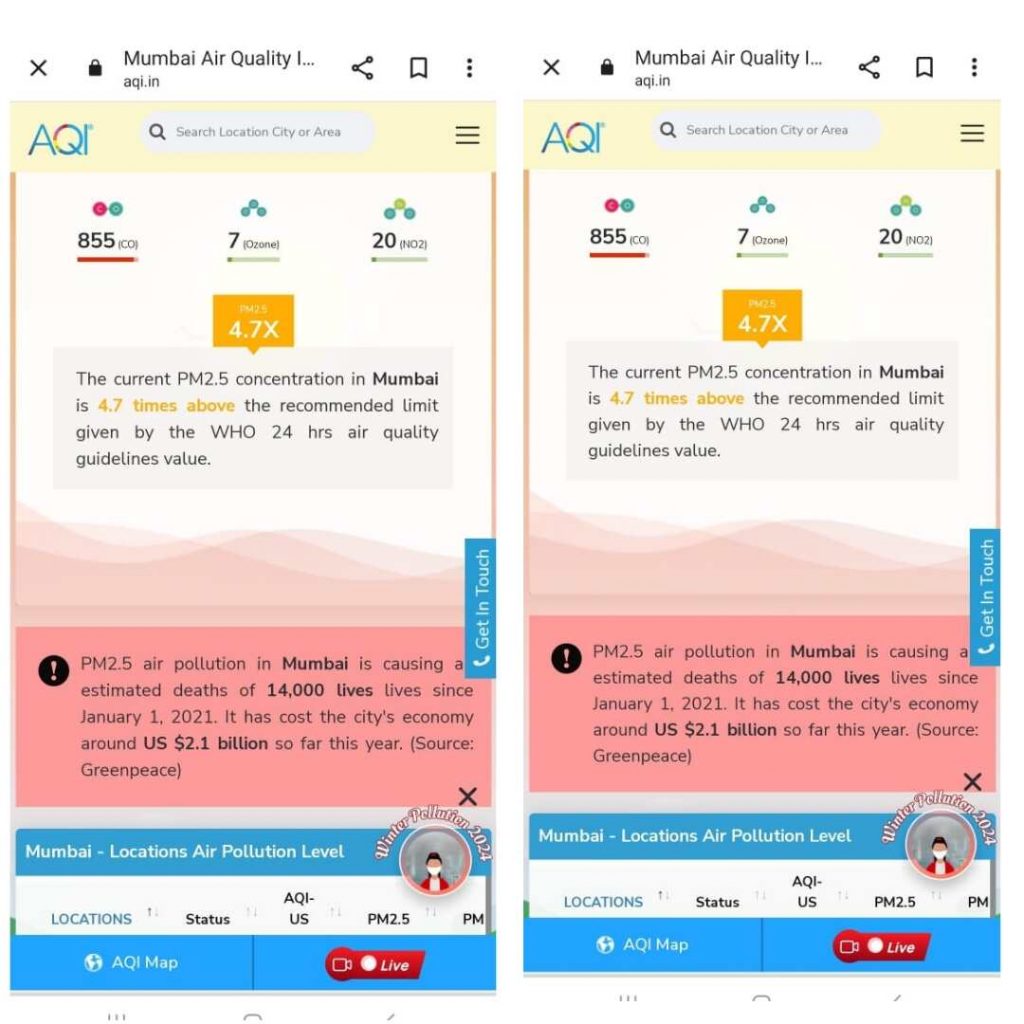City’s air quality plummets, raising health and economic concerns
While the winter air pollution crisis in Delhi dominates national headlines, Mumbai grapples with a silent, year-round struggle for clean air. A dense smog engulfed the city on Tuesday, with residents reporting a haze and a noticeable chemical odor.
Data from AQI.in reveals a stark reality: Mumbai’s PM 2.5 concentration, a key indicator of air pollution, is a staggering 4.7 times higher than the recommended World Health Organization (WHO) limit. This chronic air pollution has a devastating human cost, causing an estimated 14,000 deaths in the city since 2001.
A Greenpeace report adds another layer of concern, highlighting the economic impact of deteriorating air quality. The report estimates that air pollution has cost Mumbai a staggering $3.7 billion in lost economic productivity.
While the recent rise in PM 2.5 levels is partially attributed to slow wind speeds, the larger issue seems to be a lack of sustained attention and action. Unlike Delhi, where winter pollution sparks temporary political debate, Mumbai’s year-round struggle faces relative silence.
One resident, a vice president at a multinational company who spoke on condition of anonymity, shared this experience: “The smog is dense, and you can even smell chemicals in the air.”

On Tuesday, the AQI in parts of Mumbai reached 151, categorized as “moderate,” with pockets experiencing “poor” air quality, particularly in Worli, Mazgaon, and Bandra Kurla Complex. While the overall average falls within the moderate category, it highlights the uneven distribution of air pollution within the city.
The lack of sustained national focus on Mumbai’s air pollution crisis is concerning. While immediate solutions are needed to address the current situation, long-term strategies are crucial to ensure the health and well-being of the city’s residents and protect its economic potential.


